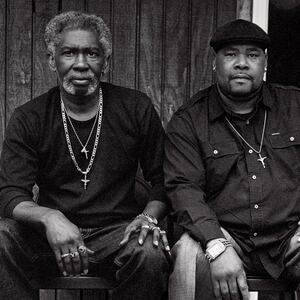After many years demanding the removal of the Confederate battle flag from the state flag, Black Mississippians received their wish when a bill doing that was signed into law last week.
Just as the state flag had served as a symbol of white supremacy for 126 years, beginning nearly 30 years after the Confederacy’s defeat, the lowering of the flag for the final time by a Black man symbolized Black Power.
By the state’s own admission, the Mississippi state flag was rooted in white supremacy. Mississippi’s Declaration of the Immediate Causes which Induce and Justify the Secession of the State of Mississippi from the Federal Union clearly states that “our position is thoroughly identified with the institution of slavery.” To enslave a race of people inherently means the perception of superiority by the oppressive race.
ADVERTISEMENT
Winston Churchill once stated that “the further backward you look, the further forward you can see.” There is also an African proverb that states, “as long as you speak my name I shall live forever.” To fully understand the role of Black Power in bringing down the flag, it is important to look back in history and recognize those individuals who dedicated most of their lives to fighting for social justice.
Civil rights stalwarts like Medgar Wiley Evers, who literally laid down his life in the fight for social justice, and Fannie Lou Hamer, who worked tirelessly despite her admission of being “sick and tired of being sick and tired,” were instrumental in spurring activism and inspiring those who continued the fight for justice.
Among those who continued that fight were Dr. Ollye Shirley, a former president of the Jackson Public School Board. As president, she helped stage one of the first successful efforts to remove a Confederate battle flag in the state when she led the Board in voting to eliminate the flag from a majority-white high school. Despite threats from white supremacists, she urged administrators to remove the flag peacefully, or she would “snatch it down” herself.
Using an unconventional political strategy, community activists like NAACP members Mrs. Delores Orey and Mrs. Ineva May-Pittman pressured a local shopping mall to stop flying the state flag by repeatedly calling and disguising their voices, so it appeared numerous customers objected to it.
State Senator Henry Kirksey served as one of the first advocates for the removal of what he called the “Confederate slave flag,” teaming up with voting rights attorneys to challenge vote dilutive mechanisms put in place by white legislators immediately following the passage of the Voting Rights Act of 1965. As a result of his efforts, today Mississippi has the largest number of Black elected officials in the nation—which proved to be the deciding factor in the removal of the flag.
Dr. Aaron Henry, then president of the Mississippi branch of the NAACP, joined forces with members of the legislative black caucus and other local activists to file a lawsuit to remove the flag in 1993. This lawsuit led to a 2001 referendum to remove the flag, which voters rejected.
Building on those efforts, the final push came from the Black power derived from the Black Lives Matter movement in response to uprisings following the death of George Floyd. These protests put pressure on corporations, universities, athletic entities and clergy to coerce Mississippians to remove the flag. Kylin Hill, a Black football player at Mississippi State University, may have made the biggest impact when he used his power as a star athlete to post a tweet threatening to leave the University if the flag was not removed.
That led to last week’s vote. Black legislators now constitute 33 percent and 27 percent of the state’s House and Senate, respectively. But because of racial polarization—all of the state’s Black lawmakers are Democrats while Whites are overwhelmingly Republicans—Black legislators rarely achieve political success.
Arguably, the most important vote to remove the flag occurred in the Senate. First, 11 Black senators and one white senator introduced a bill to remove the flag. Because of when the bill was introduced, a two-thirds vote was needed to suspend the rules and accept it. That happened because Blacks wielded political power by voting as a bloc.
An alternative to the Black Power narrative is the storyline of white legislators crossing the partisan aisle, despite opposition by their constituents. For example, Lieutenant Governor Delbert Hoseman had a change of heart and supported the removal of the flag. Yet when the bill to do that was introduced, he assigned it to the seldom-used state constitution committee rather than the rules committee where it had some support in what appeared to be an effort to derail the legislation he said he supported.
For the last 17 years, including in March of this year, members of the Legislative Black Caucus have annually introduced bills to remove the flag. These bills were dead on arrival, as they never emerged out of the assigned committees. To be sure, the speaker of the House, Phillip Gunn, publicly denounced the state flag following the brutal killings of Black parishioners in Charleston, South Carolina, by a self-proclaimed white supremacist who was pictured with a Confederate battle flag. In his denouncement he pointed to his Christian faith. That commitment diminished during the following legislative session.
The term Black Power was coined in Mississippi during the 1966 March Against Fear initiated by James Meredith. Just as that march ended at the state capitol, so did the life of the state flag.







